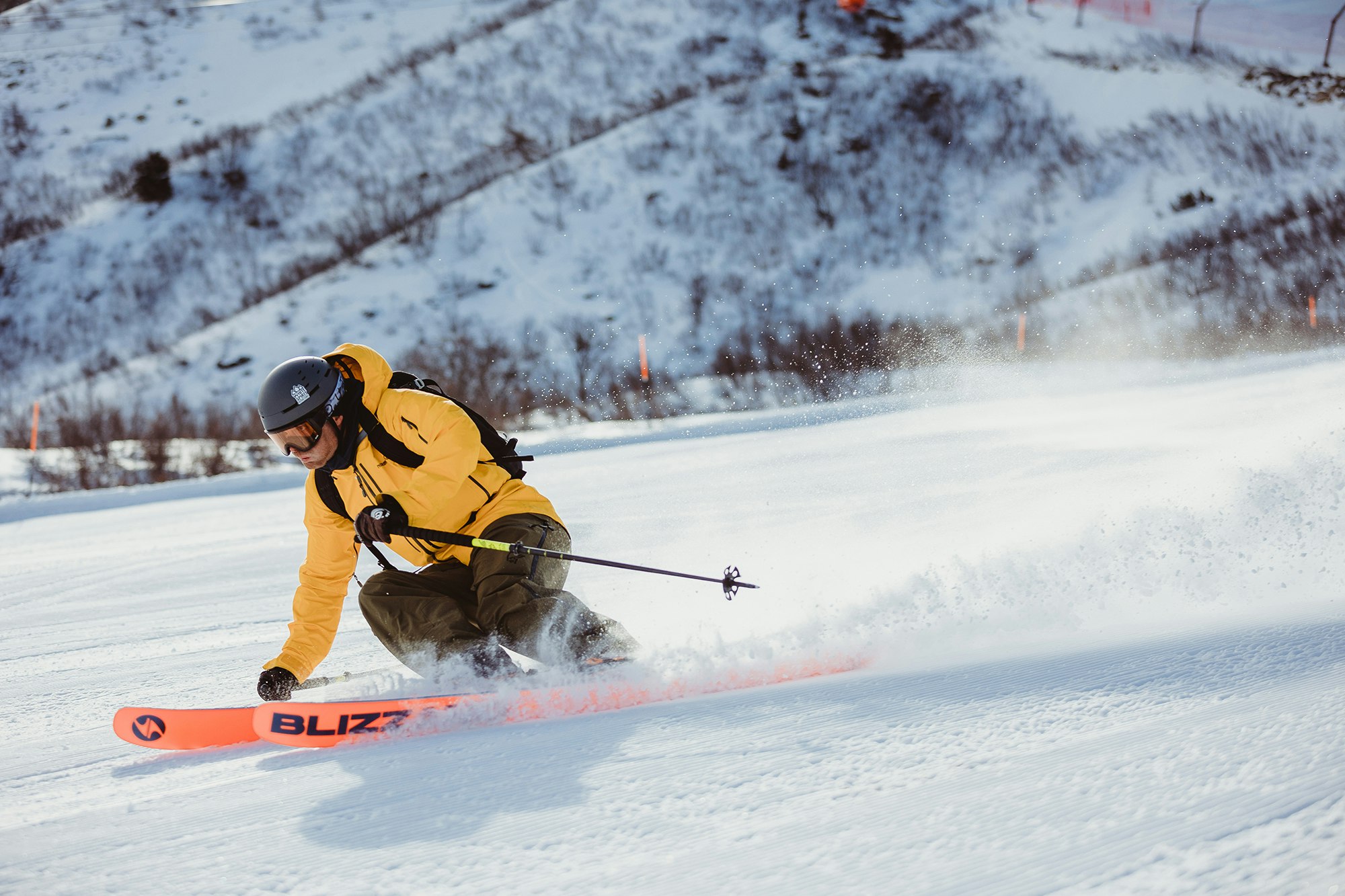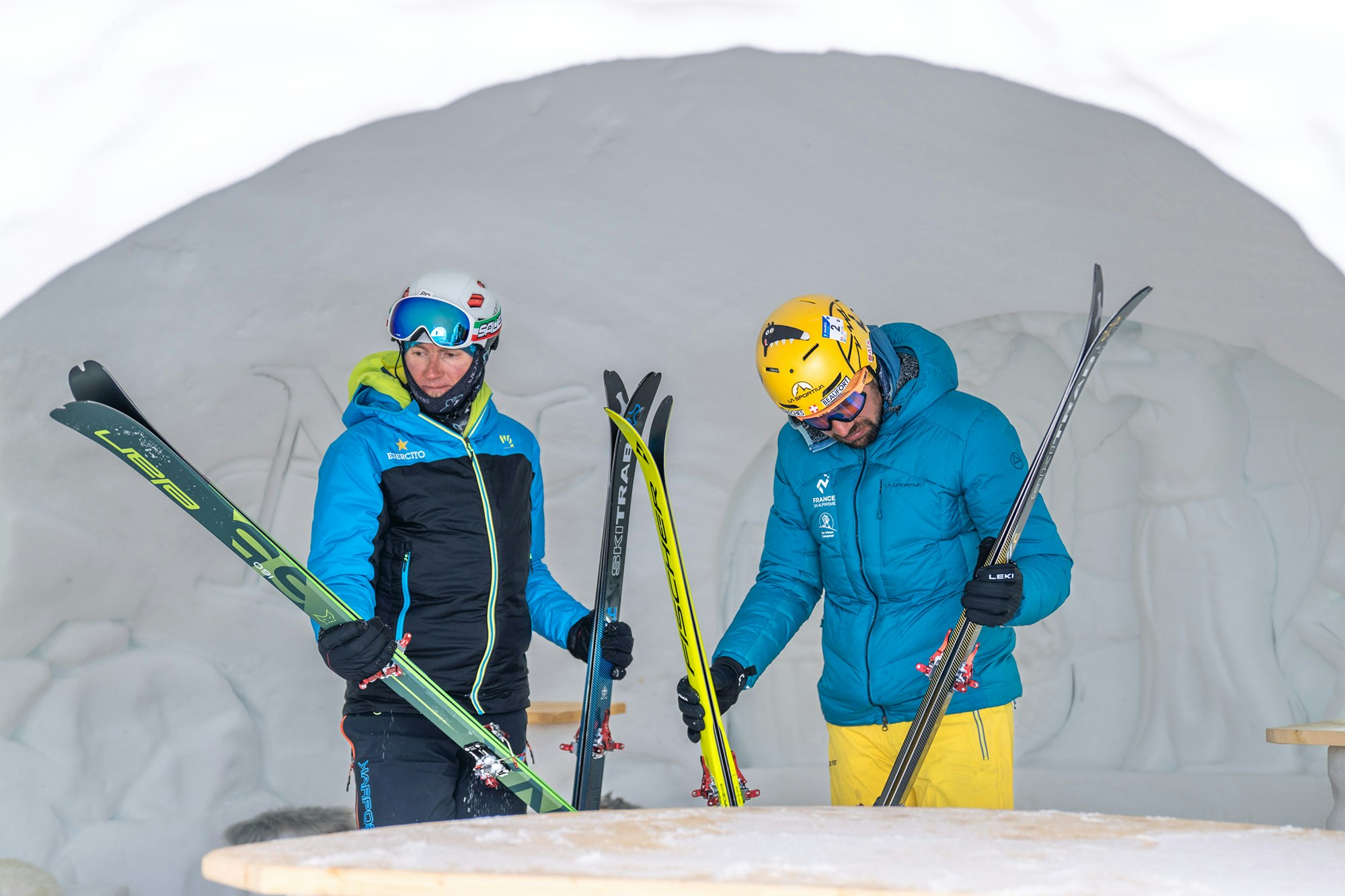Skimo helmets
Each and every detail is important when you’re on the mountain. Skis and boots are essential, but in terms of comfort and safety (and not forgetting style), so is your helmet. This new section will help you choose the right one for you.
- Author: Michele Guarneri
- Photographer: Matteo AgreiterFederico Ravassard
You never realize quite how fast you’re skiing. These days, be it on or off-piste, you can easily reach speeds of over 50 km (31 miles) per hour (and well over). Take one of the fields where huge progress has been made in terms of active and passive safety: crash tests for the Euro NCAP (European New Car Assessment Program) are carried out at 50 km per hour.
La differenza è che, in caso di impatto, attorno a noi c’è la corazza dell’auto, studiata per deformarsi in modo progressivo e per proteggerci, mentre quando sciamo abbiamo solo il casco a proteggere la testa. Ecco perché scegliere un casco deve essere soprattutto una questione di sicurezza, prima ancora che di comfort, leggerezza, ventilazione, fattori che vanno comunque tenuti in considerazione. Per lo scialpinismo Race, si fa riferimento alle certificazioni richieste da ISMF per la partecipazione alle gare, norme che sono state recepite anche dalla FISI per le competizioni sul territorio italiano. The difference being that, in case of impact, you are protected by the car’s bodywork, designed to progressively deform to protect you, whereas when skiing all you have to protect your head is a helmet. That’s why choosing a helmet is above all a question of safety, over comfort, weight, and ventilation, which are all factors to be taken into account. When it comes to ski mountaineering, to take part in races helmets must comply with ISMF regulations on certification.
The same regulations are also implemented by FISI (the Italian winter sports federation) for races on Italian territory. For a few years now, the CE EN 12492 certification has no longer been enough for skimo, CE EN 1077 (used for alpine skiing) is now also required. The main difference is in the different level of protection from lateral impacts and penetration, as regulations for mountaineering helmets are designed to protect from falling objects, while alpine ski helmets are designed to protect from impacts. While on paper, at least for non-race related activity, dual certification is not required, it definitely offers more protection in case of fall or impact.

Single-certification helmets
Petzl doesn’t make helmets that are also CE EN 10777 certified, but for the last few years has sold two models, the Sirocco and Meteor, which add their own Top and Side Protection certification to the CE EN 12492 and the UIAA 106 certifications.
This in-house protocol supplements the aforementioned standards. Forces under 10 kN are registered by dropping a 5 kg (11 lb.) weight on the front, rear and side of the helmet from a distance of 50 cm (1.6 feet). The French manufacturer self-certifies these two helmets for ski mountaineering. Even if this certification isn’t valid for races, it does guarantee more complete protection than the mountaineering certification alone, which is designed to protect from falling objects. Something to take into account from a fast & light perspective, and that should be carefully considered if you spend a lot of time on groomers, or are particularly at risk of hitting your head (looking at you, new freeride generation that loves enormous kickers and crazy cliff jumps).

Triple certification
Helmets that are also certified for cycling are becoming increasingly popular.
As with any one-quiver item, these helmets do come with some tradeoffs, but they’re becoming increasingly lighter and worthy of consideration. Are they really worth it? Maybe not, but with more and more home-to-mountain missions, pedaling to reach the skin track, they could be the perfect solution. Seeing is believing.
Share this article

